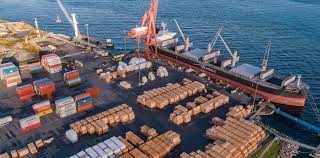
Forest to Port: Streamlining Shipping Processes in Woodland Areas
Woodland shipping, also known as forestry travelling or hardwood transport, has a critical position from the hardwood sector, guaranteeing the effective motion of hardwood from forests to handling establishments or markets. Here is everything you should learn about this vital aspect of the forestry field.
1. Travel Strategies:
Woodlands are usually based in distant or rugged landscape, producing classic transportation strategies challenging. forest shipping employs various methods, which includes pickups, trains, barges, and in many cases helis in certain excessive circumstances. Each approach has its own advantages and is also determined according to factors such as surfaces, distance, volume, and cost-efficiency.
2. Equipment and Technology:
Professional tools are employed in forest shipping to deal with and transfer wood proficiently. Including recording vehicles designed with cranes for launching and unloading, skidders for dragging felled shrubs towards the loading location, and sending trailers for carrying logs over rough ground. Sophisticated technological innovation like Global positioning system tracking and telematics are increasingly integrated to maximize routes, check automobile functionality, and boost basic safety.
3. Environmental Considerations:
Forest shipping surgical procedures must focus on environment sustainability. Methods like discerning logging, where only particular shrubs are farmed, aid lessen environmental effect. Additionally, eco-helpful travel strategies, like utilizing electric or crossbreed vehicles, are increasingly being explored to lessen carbon dioxide pollutants and minimize enviromentally friendly damage.
4. Restrictions and Safety Precautions:
Forest shipping is susceptible to stringent restrictions directed at safeguarding the two surroundings and workers’ basic safety. Conformity with signing regulations, travelling allows, body weight limitations, and road polices is crucial to prevent deforestation, garden soil erosion, and incidents. Security measures such as correct coaching for operators, standard devices servicing, and adherence to rate boundaries are essential for lessening dangers in forest shipping procedures.
5. Economic Affect:
The hardwood industry significantly contributes to localised economic systems worldwide, and effective forest shipping is important due to its sustainability. By facilitating the appropriate and cost-powerful carry of timber merchandise, forest shipping works with work, produces earnings, and energizes monetary growth in countryside places influenced by forestry.
In summary, forest shipping can be a complicated yet crucial component of the timber industry. By making use of different travel methods, embracing technical advancements, showing priority for environmental stewardship, following restrictions, and driving a car economical expansion, forest shipping performs an important role in making certain the eco friendly control over forest solutions.